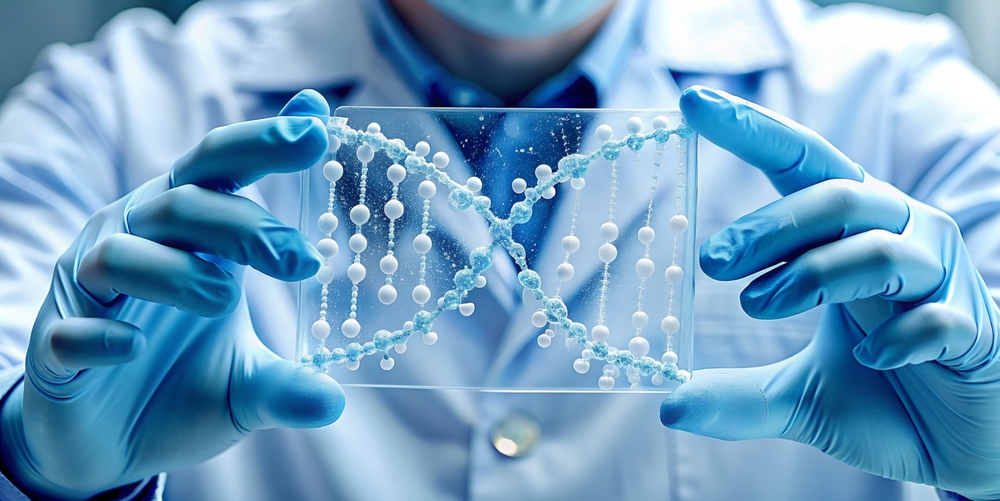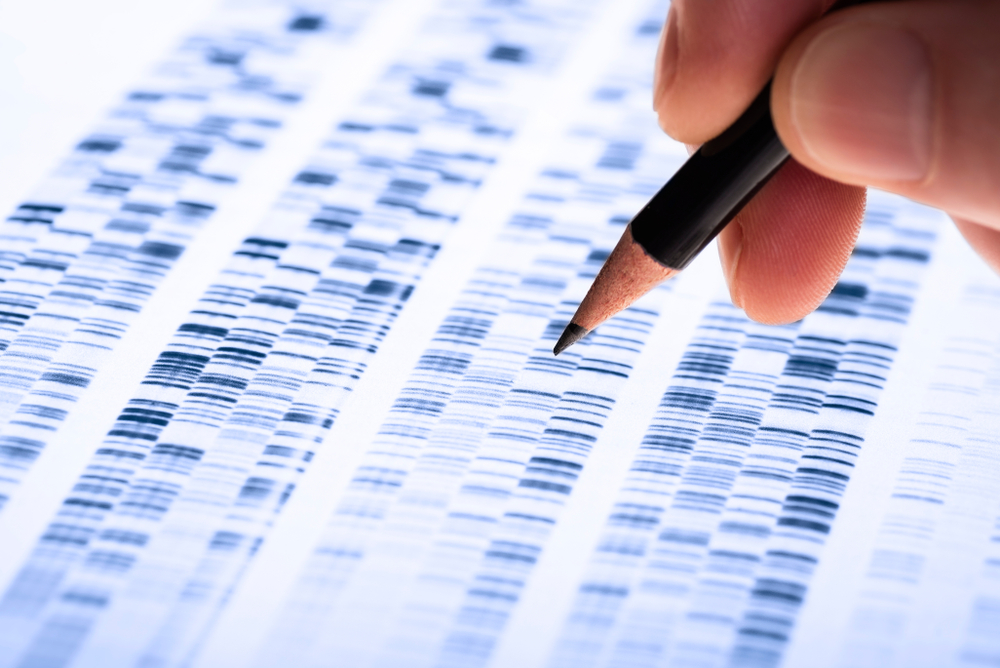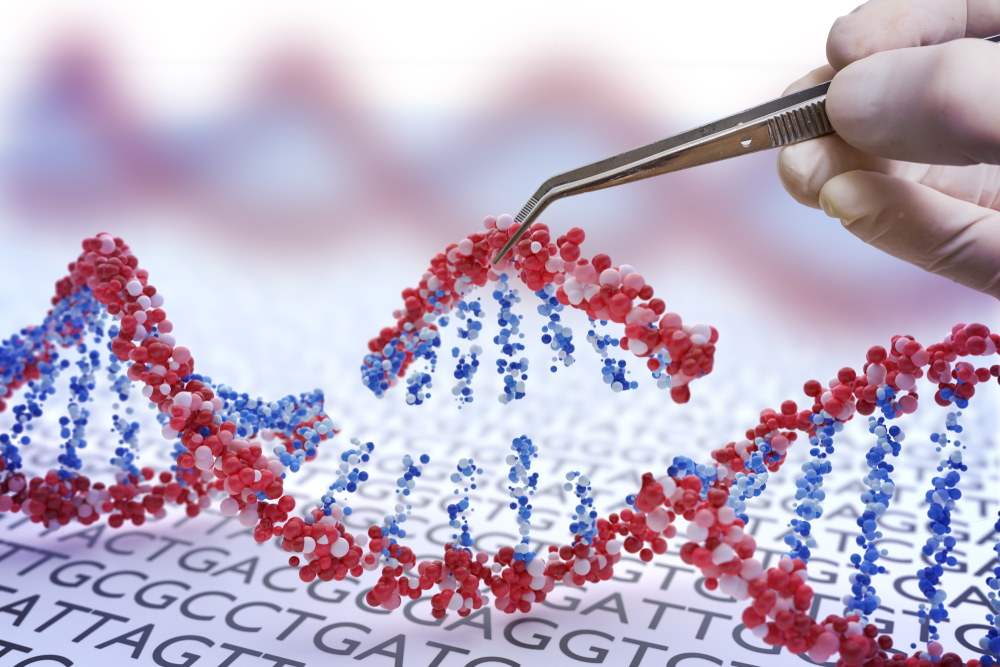A few decades ago, getting your DNA tested was the kind of thing that required a referral from a specialist, a sterile lab and a hefty budget. Fast forward to today and – voila – a small plastic tube, some spit and a prepaid envelope can allegedly tell you everything from where your ancestors wandered 400 years ago to whether you should skip coffee after 3pm.
Consumer genetic testing kits have gone from niche curiosity to mainstream must-have in record time. The idea of unlocking secrets hidden in your DNA from the comfort of your couch is undeniably seductive. But here’s the twist: while these kits can reveal some truly fascinating things, they also leave out quite a bit and come with a few strings attached that don’t always show up in the glossy marketing. Underneath the convenience and clever packaging lies a complex world of evolving science, ethical landmines, and data privacy concerns that most people never think twice about.
A Brief History of Genomics
From Mendel to Microarrays
Long before we were mailing our spit to Silicone Valley, there was Gregor Mendel and his humble pea plants. In the mid-1800s, Mendel was cross breeding peas like a botanical matchmaker, laying the foundation for modern genetics. He didn’t know it yet, but his work would eventually lead to the dazzlingly complex field we now call genomics.

Fast-forward a century, and things started to get serious. By the 1950s, we had cracked the double-helix structure of DNA (shout out to Watson, Crick, and the long-overlooked Rosalind Franklin), setting off a scientific arms race to understand what all those As, Ts, Cs, and Gs actually do.
The real game-changer came in 1990 with the launch of the Human Genome Project – a gargantuan effort to map the entire human genetic code. It took 13 years, nearly $3 billion, and the patience of saints, but by 2003, scientists had their blueprint. It was historic, but also wildly impractical for anyone who wasn’t, say, a government-funded research organization.
The Human Genome Project didn’t just give us a shiny genetic blueprint – it laid the groundwork for tools that could that could actually do something with this information. One of the biggest breakthroughs was the development of DNA microarrays: tiny chips that allow scientists to scan thousands of genetic markers at once.
How We got From Lab Coats to Living Rooms
Microarrays allowed for genetic technology to do what tech always does: get faster, smaller and cheaper. What once cost billions could be done for thousands, and eventually hundreds. What was once the exclusive domain of white coats and grant funding became accessible to startups and savvy entrepreneurs.
The first consumer-focused genetic test popped up in the early 2000s. But it wasn’t until around 2007 when 23andMe launched with sleek branding and professional backing, that the concept really clicked with the public. For the first time, people could explore their genes not out of medical necessity, but out of sheer curiosity. It was ancestry meets science meets your online dating profile.
And just like that, genetics left the lab and landed in our living rooms. But of course, science doesn’t stop just because it’s been repackaged for the masses. Behind every affordable test kit is a tangled web of cutting-edge biology, commercial ambition, and ethical questions waiting to be asked.
The Pop Culture Boom: 23andMe, Ancestry DNA and the Mainstreaming of Genomics
For most of us, science gets interesting when it stops feeling like science class and starts sounding like a plot twist. And that’s exactly what happened when DNA testing moved from academic journals into living rooms and Instagram stories.
| Dimension | Early Days / Scientific Origins | Modern Consumer Testing | Implications / Trade-Offs |
|---|---|---|---|
| Access to Technology | Elite labs, research institutions, high cost (millions to billions) | Spit in a tube, mail it in, $100–$2,000 | Unprecedented access—but also limited depth and potential overconfidence in results |
| Purpose | Academic research, rare disease studies, gene mapping | Ancestry curiosity, trait quirks, health risk snapshots | Shift from necessity to novelty introduces risks of oversimplification and misinterpretation |
| Data Depth | Full genome sequencing (later), extremely detailed | Genotyping with microarrays (partial snapshot of markers) | Cheaper and faster, but prone to missing critical or nuanced information |
| User Understanding | Experts interpreting data with scientific rigor | Consumers navigating pop-up disclaimers and pie charts | Risk of misinterpretation, especially in health contexts |
| Marketing Framing | Dense academic papers, government publications | Sleek websites, unboxing videos, influencer testimonials | Scientific complexity is often hidden under glossy UX |
| Ethical Safeguards | Institutional oversight, peer review, strict consent protocols | Click-through terms, limited understanding, monetization of data | Ethical gaps emerge as tech moves faster than regulation |
| Privacy Control | Confidential lab environments | Third-party data sharing, law enforcement access, pharma partnerships | You’re not just the customer—you’re also the commodity |
| Cultural Impact | Niche field, slow-moving breakthroughs | Talk show reveals, YouTube drama, family secrets uncovered | DNA becomes both entertainment and a disruptor of personal narratives |
| Science Literacy Required | High: genetics degree, lab training | Low: “surprising” trait reports with minimal context | Raises concerns about informed consent and potential psychological impact |
| Health Implications | Focused on rare or well-understood conditions | Reports on common disease risk, pharmacogenetics, lifestyle predictions | Results may be misleading or anxiety-inducing without genetic counseling |
| Social Ripple Effects | Mostly academic discourse | Paternity surprises, unknown siblings, adoption revelations | Genetic networks expose family secrets far beyond individual intent |
| Legal Landscape | Governed by institutional protocols, NIH standards | Variable protections, loopholes in laws like GINA | Long-term risks in insurance, employment, and legal exposure |
| Future Tech Trajectory | Human Genome Project, first-generation sequencing | Whole genome sequencing, polygenic risk scores, embryo screening | Greater precision—but deeper ethical concerns and potential for inequity |
The Big Players
In the late 2000s, a few biotech startups had the bright idea of turning your genes into a personal narrative. 23andMe, backed by Silicon Valley dollars and a co-founder married to Google’s Sergey Brin, leaned hard into sleek design, self-quantification, and the thrill of personal discovery. Their pitch? Pay a few hundred bucks, spit in a tube, and get a neatly organized dossier of your ancestry, health risks, and quirky traits (like whether you sneeze when you look at the sun – yes, that’s a thing).
Not far behind was AncestryDNA, the genetic sidekick to the already popular Ancestry.com. While 23andMe aimed at the quantified-self crowd, AncestryDNA targeted the family-history buffs, the people who wanted to go beyond the paper trail and find genetic proof of their Viking heritage.
Then came the pop culture explosion. Celebrities were testing their DNA on talk shows. YouTubers filmed their results like unboxings. Oprah featured 23andMe. A whole subgenre of “I Took a DNA Test and You’ll Never Guess What I Found!” content was born. And somewhere in there, genetic testing kits became the go-to quirky gift for Christmas, birthdays, and the mildly bored.

The 23andMe FDA Saga
But it wasn’t all spit and giggles. In 2013, the FDA pulled the handbrake on 23andMe’s health reports, concerned that people were making serious medical decisions based on consumer-level tests. The company was temporarily banned from offering health-related insights in the U.S., a reality check that science still needs regulation, even when it comes with millennial-friendly branding. After some regulatory wrangling, they were allowed to bring back certain reports, but this time with clearer disclaimers and FDA clearance for specific conditions like BRCA mutations. More recently, 23andMe has been under fire again, after a data breach exposed personal information from the profiles of almost 7 million people. This has been a real knock to the genetic testing company both in terms of finances and credibility, and they are now facing an uphill battle to regain trust and find new investors.
Meanwhile, real-life drama was playing out beyond the marketing. People were uncovering unknown siblings, family secrets, and adoption stories, often by accident. There were happy reunions, existential crises, and the occasional “My Dad Isn’t My Dad” revelation that turned holiday dinners into therapy sessions.
So genetics was having its pop-culture moment. And in doing so, it became personal – sometimes uncomfortably so. But it also sparked something else, a wave of curiosity, empowerment, and conversation. Suddenly, people cared about alleles, ancestry percentages, and mitochondrial DNA in a way no science textbook could’ve pulled off.
What the Tests Actually Reveal (and What They Don’t)
So you’ve spat in a tube and sent your genetic secrets off to be processed in a lab that probably looks like a cross between a data center and a sci-fi set. A few weeks later, your inbox pings: your results are ready. Cue dramatic music. And charts. And color-coded maps.
Let’s break down what these kits are actually telling you, and where things start to wobble a bit.
Ancestry Reports: The Genetic Guesswork of Where You’re “From”
Ancestry results are probably the flashiest part of any genetic testing kit. You get a pie chart of your ethnic breakdown, a world map peppered with regions, and a proud announcement that you’re 14% Scandinavian, or something.

Here’s the fine print: ancestry estimates are based on comparing your DNA to reference populations – groups of people whose genetic data is already in the system. The problem? These reference databases are constantly evolving, and some populations are more represented than others. That means your results can change over time, not because your genes changed (they didn’t), but because the algorithm got an update.
So yes, these results can offer interesting insights, especially for people with mixed heritage or gaps in their family history. But they should be taken with a pinch of salt, and so maybe don’t rewrite your entire identity around that intriguing 2%.
Traits and Quirks: Fun, Flawed, and Often Overstated
This is where things get… quirky. Many kits now include a “traits” section, offering insight into everything from your eye color to your potential fear of heights to whether you hate cilantro (blame the OR6A2 gene, apparently). It’s fun, interesting and just scientific enough to feel credible.
But here’s the issue: most traits are polygenic, meaning that they’re influenced by many genes, plus a hefty dose of environmental influence, randomness and life experience. These tests often simplify that into “You’re more likely to dislike bitter tastes,” when what they really mean is “You and some people with a similar gene variant might share this tendency, but also maybe not.”
Basically, it’s comparable to back-page horoscopes – fun to read, but not exactly diagnostic.
Health Reports: Some Hits, Some Misses, and a Lot of Grey Area
Now to the more serious stuff: health insights. Some kits offer reports on genetic risks for conditions like Alzheimer’s, Parkinson’s, certain cancers, or how your body processes medications. This can be genuinely helpful, especially if you’re flagged for a known high-risk mutation like BRCA1 or APOE4.

But this is where accuracy, nuance, and context become crucial. Most consumer kits use genotyping, not full genome sequencing. That means they’re scanning for known markers, not reading your entire genetic code. So while they might catch a red flag, they can also miss a lot. Think of it like skimming a book for keywords instead of reading the whole thing.
And even when they do find something, the meaning isn’t always clear. Many results come with caveats like “variant of uncertain significance”, a non-accountability card that says “we see something, but we don’t know quite what it means.” Helpful? Sort of. Reassuring? Not really.
Correlation Does Not Equal Causation (No, Your Genes Don’t Make You a Night Owl)
It’s also worth noting that most results are based on correlations pulled from large population studies. Just because people with a certain genetic variant tend to drink more coffee doesn’t mean your DNA is making you a caffeine fiend. It could be cultural, environmental, or just coincidence. The line between predisposition and personality is blurred at best.
In short: these kits offer a fascinating peek into your genetic landscape, but they’re not the final word on your identity, health, or destiny. They’re a highlight reel – not the full documentary. And sometimes, the reel is edited for maximum engagement, not maximum accuracy.
The Ethical and Privacy Minefield
Let’s say you’ve just learned you carry a gene that increases your risk of a certain disease. Or you’ve found out you have a sibling no one ever mentioned. Or maybe you’re just enjoying your shiny ancestry pie chart. Whatever the case, here’s a sobering truth: once your DNA leaves your body and hits a server, it’s not just yours anymore.
Welcome to the part of the story where things get murky, and frankly, a little dystopian.
Your DNA Is You – But It’s Also a Hot Commodity
When you mail off that little tube of saliva, you’re not just sending genetic material – you’re sending information about your health, your heritage, and potentially your entire biological family. Most people gloss over the terms and conditions, but buried in those fine-print labyrinths is often this gem: you may be granting the company the right to store, share and even sell your anonymized genetic data.

Companies like 23andMe have partnered with pharmaceutical giants (like GlaxoSmithKline) to turn this data into research gold. It sounds noble (helping science!) but make no mistake: it’s also a revenue stream. Your genes are valuable, especially when aggregated into massive datasets that can be mined for insights into drug development, disease risk, and more.
You are the product. Or at least, your saliva is.
The Law Enforcement Loophole: CSI, But Make It Personal
In 2018, the Golden State Killer (a decades-old serial murder case) was solved using a public genealogy database. Investigators uploaded a DNA profile from the crime scene and matched it to distant relatives who’d taken consumer DNA tests and uploaded their results to GEDmatch, a free platform for genetic genealogy. The result? A cold case cracked. The fallout? A privacy panic.
Most of the big testing companies claim they won’t hand over your data without a warrant, but “warrant” is doing a lot of heavy lifting there. And even if you haven’t consented to law enforcement use, your third cousin who uploaded their data on a whim might’ve opened that door for your entire extended family. DNA doesn’t work in isolation, it’s a web. And that web can be pulled into court whether you like it or not.
Insurance, Discrimination, and the Genetic Crystal Ball
In many countries, laws like the Genetic Information Nondiscrimination Act (GINA) protect against certain forms of genetic discrimination, like being denied health insurance based on your DNA. But those protections don’t always extend to life insurance, disability coverage, or long-term care insurance. Translation: a test you took for fun could one day raise red flags with an insurer.
The logic is cold but simple: if your genes say you’re high-risk, why should they take the gamble?
And it’s not just about individual consequences. There’s a real danger in turning genes into destiny, of letting employers, insurers, or even governments treat DNA as a fixed script rather than one messy, probabilistic piece of the human puzzle.
Informed Consent in the Age of Click-Through Culture
Here’s the kicker: most people who take these tests have no idea what they’re really consenting to. The science is complicated, the risks are abstract, and the interfaces are designed for speed, not reflection. It’s a recipe for half-informed decisions made in three clicks or less.
Add to that the fact that your genetic data doesn’t just belong to you, it implicates your family, your children, your future generations. You may be comfortable with sharing, but what about them? What about the sibling you didn’t know you had?
Looking Ahead: The Future of Personal Genomics
The age of spit kits was just the beginning. The future holds whole genome sequencing, polygenic risk scores and ethical dilemmas that sound straight out of sci-fi. Until now, most consumer DNA kits have only offered genotyping – a highlights reel of your genome. But full genome sequencing is getting cheaper and more accessible, offering a complete readout of all 3 billion base pairs. That means more insights… but also more noise. Expect more results with those vague “variant of uncertain significance” labels.
One rising trend is polygenic risk scores – algorithms that estimate your risk for conditions like heart disease or depression based on the combined effect of multiple genes. Sounds promising, but accuracy varies hugely across populations and risk isn’t necessarily destiny. DNA is just one piece in a much bigger health puzzle.
Meanwhile, gene editing tools like CRISPR are turning what-if questions into real-world scenarios. We’re already scanning embryos for disease risk. But when do we cross the line from prevention to “designer” enhancements? Who gets access? And what happens to equity when better genes become a payable service?

All this makes one thing clear: the science is outpacing our understanding. Most people aren’t equipped to decode their genetic data, and companies haven’t always done a great job of guiding them. If personal genomics is going to deliver on its promise, not just to create more anxiety and confusion, then we’ll need more than clever marketing. We’ll need transparency, education, and a whole lot more ethical reflection.
The rise of low-cost genetic testing kits is one of those rare moments where cutting-edge science collides with everyday life. What once took years of research and a lab full of specialists can now be done for the price of a night out and a postage stamp.
And sure, these kits can offer incredible insights: a newfound cousin, a deeper connection to your heritage, even early warnings about health risks that could shape your future. But let’s not confuse accessibility with certainty. Most tests aren’t crystal balls, they’re conversation starters. They reveal some of your story, in broad brushstrokes, but they leave out complexity, context, and nuance. The tech that powers personal genomics is extraordinary, but it’s still evolving. The science is incomplete. The databases are biased. And the ethical questions are still very much unanswered.
So, should you take a DNA test? Maybe. But go in with your eyes open. Know what it can tell you, what it can’t, and who else might be learning about you in the process. Because your DNA isn’t just a fun fact, it’s a deeply personal record of who you are, where you come from, and controls what future doors you may (or may not) want to open.
And in a world where your genetic data can outlive your passwords, your playlists, and even your assumptions, the most important question might not be what’s in your DNA, but who gets to read it.








